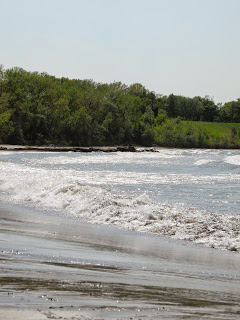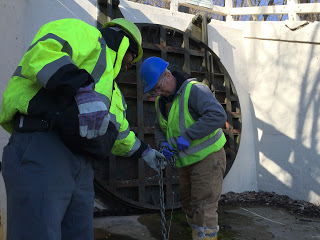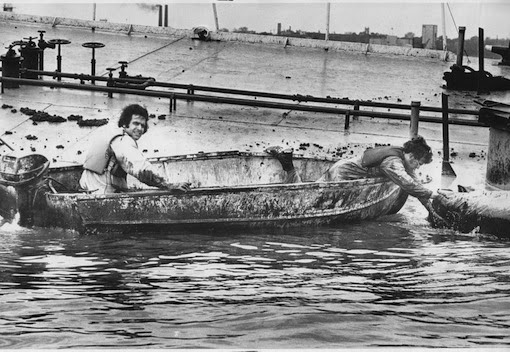
NOTICE: Water quality advisory posted at Edgewater as a result of early morning storm, overflow
Posted by Jared Shepherd
- 4300 Views
- June 23rd, 2015
- in Miscellaneous
- No Comments
This morning, the Northeast Ohio Regional Sewer District posted a public advisory at Edgewater Beach, a result of a combined sewer overflow (CSO) event which discharged raw sewage into Lake Erie during this morning’s heavy rain storm.
Visitors—particularly children, the elderly and those in ill health—are advised to avoid contact with the water and debris.
“Edgewater is yet another example of why we need to continue to be aggressive in investing in our sewer infrastructure, particularly if want to continue to capitalize on the good work of the Cleveland Metroparks and those who are developing along the lakefront,” said Sewer District Chief Executive Officer Julius Ciaccia recently.
“Otherwise, to ignore the problems, like combined sewer overflows, stormwater run-off, failing septic systems, and illicit connections of sanitary sewage to storm sewers, that plague our local waterways would be irresponsible, and would squander the past investments made to keep our Great Lake great.”
Since 1972, the Sewer District has reduced the volume of CSO by half—from 9 billion gallons to 4.5 billion gallons—and continues efforts to reduce CSO from entering local waterways. The Sewer District has $3 billion plan—Project Clean Lake—which will further reduce overflows from 4.5 billion gallons to 500 million gallons by 2036 through the construction of large-scale storage tunnels, green infrastructure, and wastewater treatment plant upgrades.
As part of Project Clean Lake, the Sewer District is currently constructing the Euclid Creek Tunnel, which will hold 60 million gallons of raw sewage during a heavy rain event, redirecting it to the Easterly Wastewater Treatment Plant, improving water quality near Euclid Beach and Villa Angela Beach.
The Mill Creek Tunnel, which was completed in 2012, can hold 75 million gallons of raw sewage during a heavy rain event, and redirects untreated wastewater to the Southerly Wastewater Treatment Plant instead of local waterways.
 |
| Crews working on the Edgewater beach outfall flap gate |
Throughout the mid-1970s, the combined sewer outfall at Edgewater Beach discharged raw sewage into Lake Erie approximately 40 to 50 times per year.
However, because of the Sewer District’s improvements to aging infrastructure, the Edgewater combined sewer overflow discharges have significantly decreased: the overflow, on average, discharges only once every few years.
Due to two heavy storms this week, the Edgewater outfall last discharged June 15. Prior to that, the last discharge event at Edgewater Beach occurred on June 24, 2014.
Other Midwest cities, with similar combined sewer infrastructure, are also addressing combined sewer overflow issues.
The Sewer District will continue its daily water quality testing near Edgewater Beach.


